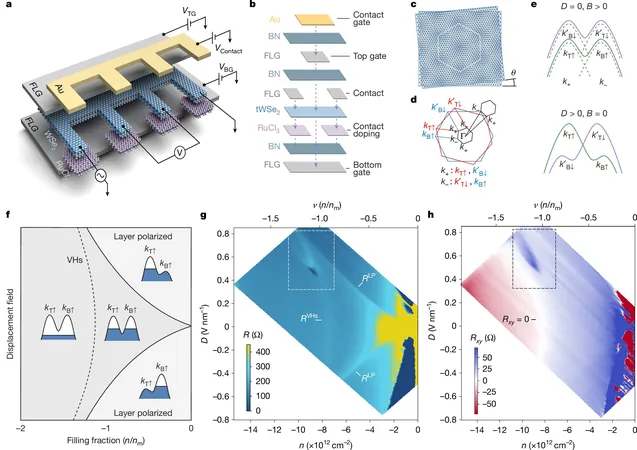
Revolutionizing Technology: Scientists Discover Breakthrough in Superconductors!
2025-05-05
Author: Nur
Picture a future where electric vehicles zip down roads, wirelessly recharging as they go, laptops become exponentially more powerful, and clean energy is abundant and accessible. This thrilling prospect could soon be within reach thanks to groundbreaking advancements in superconductors—materials that can transmit electricity with almost perfect efficiency.
However, here’s the catch: Current superconductors, from familiar elements like lead and aluminum to advanced compounds like niobium-titanium, only function under extreme cold or immense pressure. This limitation has made these materials impractical for widespread use, and the fundamental science behind them remains a bit of a mystery.
Superconductors play a key role in technologies such as MRI machines, particle accelerators, and levitating trains, but their high costs and sensitivity have raised barriers to broader applications. The race is on to innovate direct from the lab—to design more affordable and multifunctional superconductors that could transform our everyday lives.
Enter a multidisciplinary research team from Columbia University, led by physicist Cory R. Dean. Their recent groundbreaking study published in the journal Nature has revealed that tungsten diselenide, a crystalline compound, can be engineered to exhibit superconductivity when thinly sliced into sheets just one or two atoms thick.
This marks a significant milestone, as it’s one of the first instances of inducing superconductivity by manipulating a material’s structure on the nanoscale. The team has been experimenting with tungsten diselenide since 2020, inspired by the prior work of MIT physicist Pablo Jarillo-Herrera, who discovered that twisting and stacking graphene—an ultra-thin layer of carbon—can unlock superconductive properties.
"One of our main questions was whether superconductivity was unique to graphene or could be induced in other two-dimensional materials," explains Dean.
After extensive trials with tungsten diselenide, the Columbia researchers found a winning approach: they layered two sheets, twisted one by a precise five degrees, and cooled them to -272.7°C. When an electrical charge was applied, the researchers witnessed electrons zipping through the compound at staggering speeds—far faster than in conventional metals!
Despite this monumental discovery, the need for such extreme cooling means that tungsten diselenide—like graphene—still isn’t a practical substitute for currently utilized superconductors, especially in critical fields like medical imaging.
Yet, Dean’s breakthrough has been hailed as one of the most significant advances in materials science in years. It offers vital insights into the mechanics of superconductivity and builds hope that one day scientists could create superconductors capable of operating under practical conditions.
"The ultimate dream is to develop a superconductor that works at room temperature," states Dean. This feat would revolutionize electronics across all sectors—from computing and healthcare to energy production and transportation.
"Our discovery could very well hold the key to making this dream a reality!"



 Brasil (PT)
Brasil (PT)
 Canada (EN)
Canada (EN)
 Chile (ES)
Chile (ES)
 Česko (CS)
Česko (CS)
 대한민국 (KO)
대한민국 (KO)
 España (ES)
España (ES)
 France (FR)
France (FR)
 Hong Kong (EN)
Hong Kong (EN)
 Italia (IT)
Italia (IT)
 日本 (JA)
日本 (JA)
 Magyarország (HU)
Magyarország (HU)
 Norge (NO)
Norge (NO)
 Polska (PL)
Polska (PL)
 Schweiz (DE)
Schweiz (DE)
 Singapore (EN)
Singapore (EN)
 Sverige (SV)
Sverige (SV)
 Suomi (FI)
Suomi (FI)
 Türkiye (TR)
Türkiye (TR)
 الإمارات العربية المتحدة (AR)
الإمارات العربية المتحدة (AR)